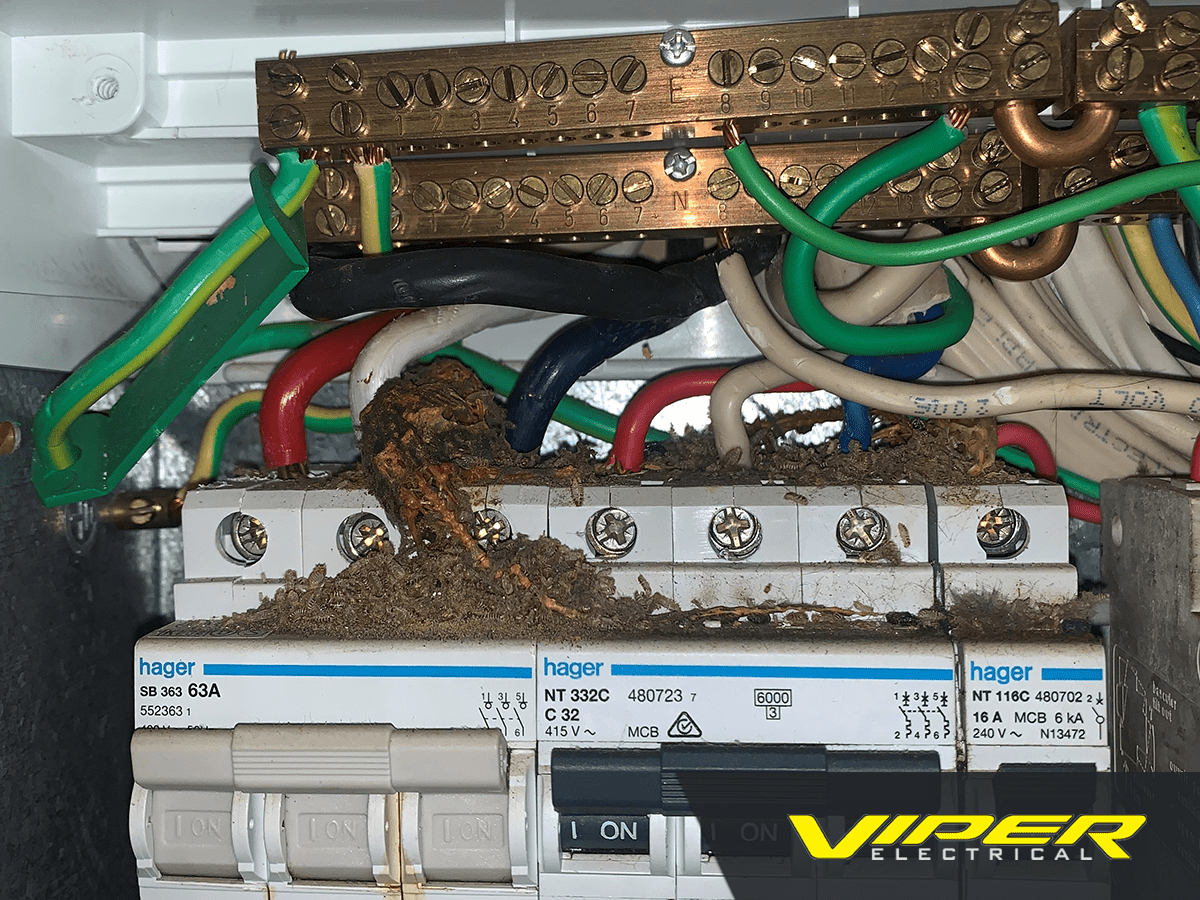At Viper Electrical, our certified Auckland electricians have over 20 years of experience completing all kinds of electrical work on a wide variety of homes.
From our decades of experience, we have devised a list of the top 10 common electrical issues that we come across while conducting maintenance and renovations on old homes.
- Noncompliant work
- Rubber insulated cables
- Circuit overloads
- Non-RCD switchboards
- Halogen or incandescent downlights
- Faulty switches & sockets
- Unprotected wiring
- Use of unsafe appliances
- Exposed outdoor wiring or terminations
- Non-compliant fittings
We’ll dive deeper into each of these electrical hazards below.

Electrical Hazard #1: Noncompliant Work
If you’re living in an old home, you have an elevated risk when it comes to electrical hazards. A main concern centres around noncompliant work that does not meet current electrical standards and regulations. Whenever we encounter such situations, we always err on the side of caution and let our clients know that any noncompliant work needs to be corrected as soon as possible.
So if you have an older home, it may be worth getting it checked out.
Electrical Hazard #2: Rubber Insulated Cables
Nothing beats the charm of an old house, but outdated electrical systems can pose a hidden danger. One of the more common electrical hazards is rubber insulated wiring, or TRS Cable. Used in pre 1960’s homes, this type of cable has a high risk of the rubber insulation deteriorating over the years which exposes live conductors – a very real risk when it comes to fire and electric shock. This makes it one of the most dangerous hazards we come across.
If your home was built before 1960 and you haven’t updated your switchboard or wiring, this hazard is a real risk for you. So it’s better to be safe than sorry – book an electrical assessment with Viper Electrical today.
Electrical Hazard #3: Circuit Overloads
The third electrical hazard we often come across in old homes is circuit overloads. The result of years of additional items being added to the circuits can lead to cables drawing more current than they are rated for, causing cables to heat up and eventually breaking down the insulation.
Don’t risk your safety, if you have an older home or suspect any electrical fault contact our Auckland electricians at Viper Electrical and we’ll assess your property.
Electrical Hazard #4: Non RCD Switchboards
RCD safety switches are like a bodyguard for your electricity! A sensitive safety device that quickly swings into action by switching off electricity automatically if it detects a fault. An RCD is designed to protect against the risks of electrocution and fire caused by earth faults, unlike circuit breakers or fuses which only protect the cable against over currents or short circuits.
With such impressive advantages to RCD switchboards and them now being a requirement on all socket outlet circuits and lighting circuits, we highly recommend that you get your non RCD switchboard upgraded as soon as possible.
Electrical Hazard #5: Halogen or Incandescent Downlights
Halogen and incandescent downlights are often quite common in many older homes. Unfortunately, they can be a real fire hazard due to their high running temperatures.
Thankfully there are solutions – upgrading to LED downlights not only helps you save on your electricity bill but it also helps improve your family’s safety.
Electrical Hazard #6: Faulty Switches & Sockets
If you live in an old home, the chances that your electrical system is outdated are high. We quite often come across sockets and light switches with broken switch mechanisms that can lead to exposed live parts. It is important that these are replaced – fast!
Electrical Hazard #7: Unprotected Wiring
The 7th common electrical hazard we see in old homes is unprotected wiring.
This is where cables are exposed in areas that require protection. Failing to do so is a major safety hazard, so it’s paramount that you have a qualified electrician take a look.
Electrical Hazard #8: Use Of Unsafe Appliances
We often find unsafe appliances are being used in old homes. That’s right—that trusty kettle that you’ve been using for years may no longer be safe, raising the risk of electric shock or even fire!
Electrical Hazard #9: Exposed Outdoor Wiring Or Terminations
Exposed outdoor wiring or terminations is a fairly common, major issue we find in old homes and can lead to serious problems down the line. If water comes into contact with these exposed wires or terminals, there’s a strong possibility that it’ll result in a short circuit.
If you suspect this could be a problem at your home, contact Viper Electrical today. We’ll come
Electrical Hazard #10: Non Compliant Fittings
The last most common electrical hazard in an old home is non compliant fittings. Some light fittings or appliances that do not have a declaration of conformity. These fittings can cause a wide range of electrical problems and safety hazards.
Of course, the best solution is to make sure all your electrical fittings are compliant. If you need assistance with this contact Viper Electrical, we’ve got you covered! >> viperelectrical.co.nz/contact/




